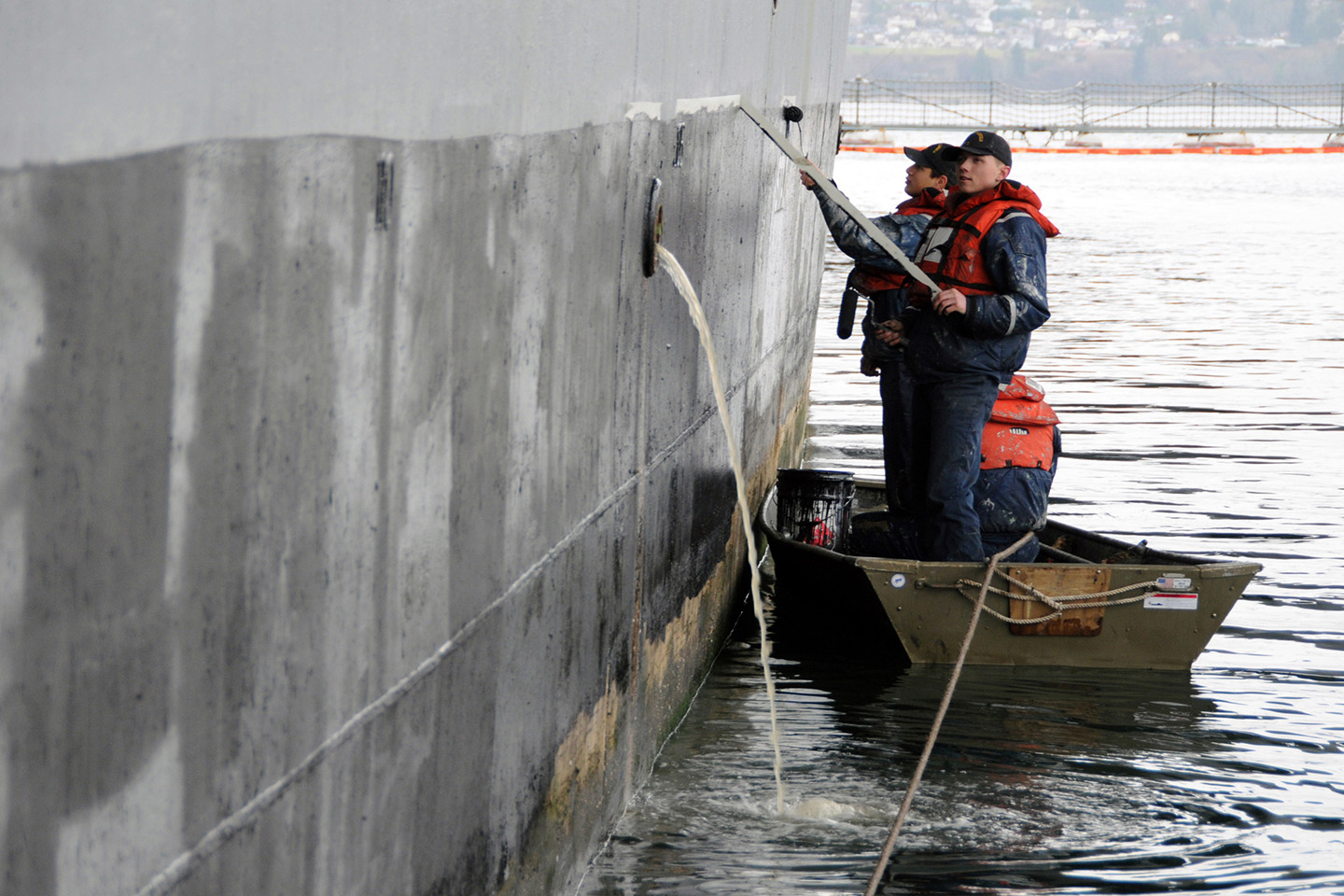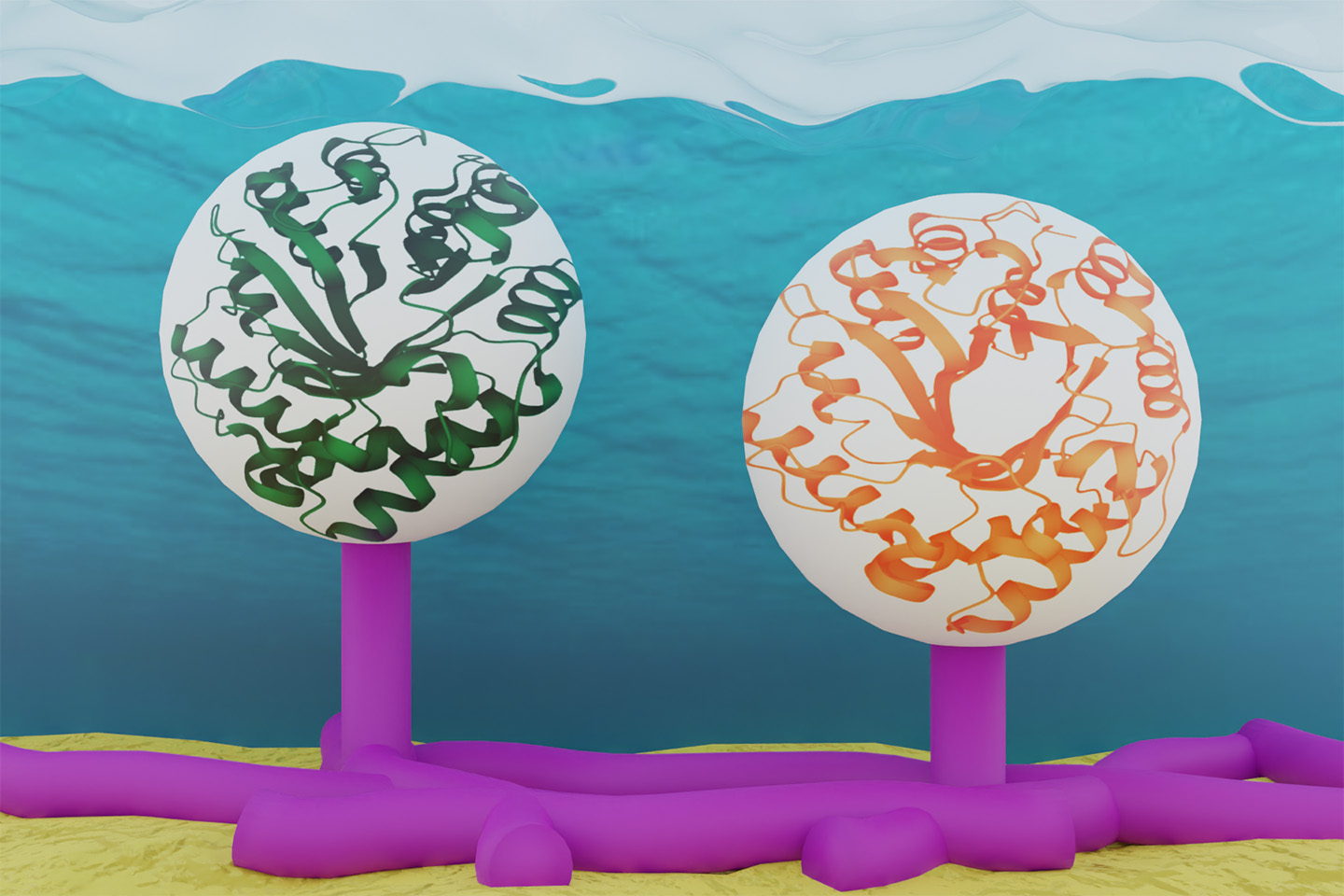News
Paintable Proteins Provide Environmentally Friendly Way to Protect Ship Hulls at Sea
Taking inspiration from aquatic life, Johns Hopkins APL researchers are propelling the field of bioconjugation outside the lab and onto ship hulls.
Within minutes of a ship’s hull being submerged in seawater, a complex web of life starts to develop: bacteria, algae, tube worms, barnacles and mussels. This adhesion of organisms, known as biofouling, increases drag and fuel consumption and leads to costly corrosion — but many of the existing methods to prevent it are toxic.
Antifouling coatings, which slow the growth of organisms, typically rely on the toxicity of copper and small-molecule additives that act as pesticides in the water near a ship’s hull. These poisonous paints leach into the seawater and destroy aquatic life.
Now, researchers at the Johns Hopkins Applied Physics Laboratory (APL) in Laurel, Maryland, have developed a nontoxic, environmentally friendly paintable protein that inhibits fouling. The APL team published its results in the Journal of Coatings Technology and Research.
Fishing for Inspiration
Researchers have identified active proteins, or enzymes, as potential nontoxic antifouling agents. But no one had developed an effective way to bind enzymes onto a specific location while maintaining their functionality. Enzymes must be covalently, or chemically, attached to a surface to maintain their antifouling properties.
“Many marine animals do not want to be covered in biofouling and have developed enzymes to protect themselves,” said project lead Reid Messersmith, a molecular engineer in APL’s Research and Exploratory Development Department (REDD). “Taking inspiration from animals, we developed an enzyme coating that could be applied directly to surfaces.”
Biological scientist Ryan Baker-Branstetter, who led the enzyme and antifouling research, added that biofouling develops from bacteria settling on a surface. So, if the team could prevent small bacteria from forming, larger organisms would not follow.
A Paint Bucket Approach
APL’s antifouling coating stems from a 2021 patent for antimicrobial coatings developed at the Lab.
“It’s difficult to get enzymes to stick to just anything and remain active in the process. Bioconjugation is a technique to couple naturally occurring biomolecules and synthetic compounds. There have been promising laboratory results proving that certain enzymes can be attached to certain surfaces, but those results have not translated into real-world applications,” said Messersmith. “We wanted to create a paint bucket approach, where someone could walk up and efficiently and effectively slap the coating on a surface.”
To do that, they needed to identify an effective “linker” — an agent capable of bonding an enzyme to a synthetic compound.
APL researchers developed an enzyme-based polymer coating with an ortho-phthaldialdehyde (oPA)-based linker, which is capable of bonding enzymes onto surfaces, and doing so rapidly — taking less than five minutes to form a layer of material. The oPA-based linker maintained activity for extended periods of time in experiments, compared to no linker and a commercially available linker.
“The first protein we painted in 2021, red fluorescent protein, established that the chemistry behind the coating system and our linker worked. This allowed us to revisit which proteins would effectively prevent biofouling in our latest research,” said Messersmith.

